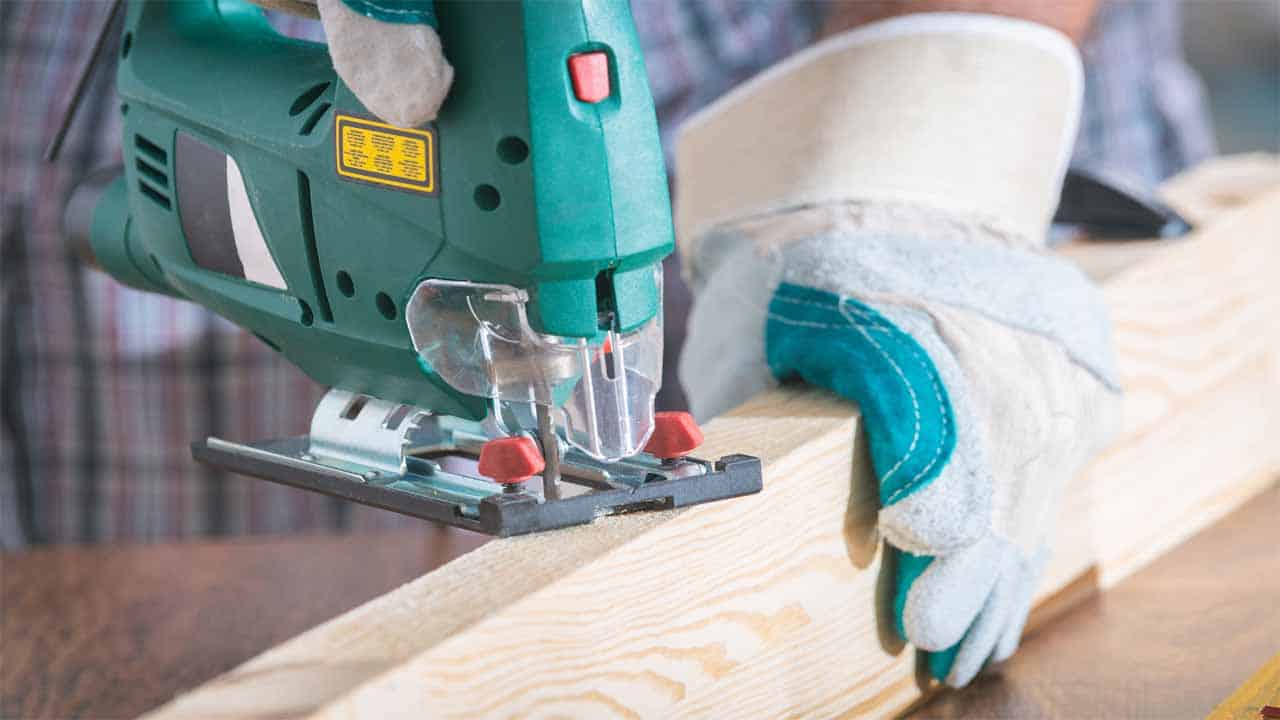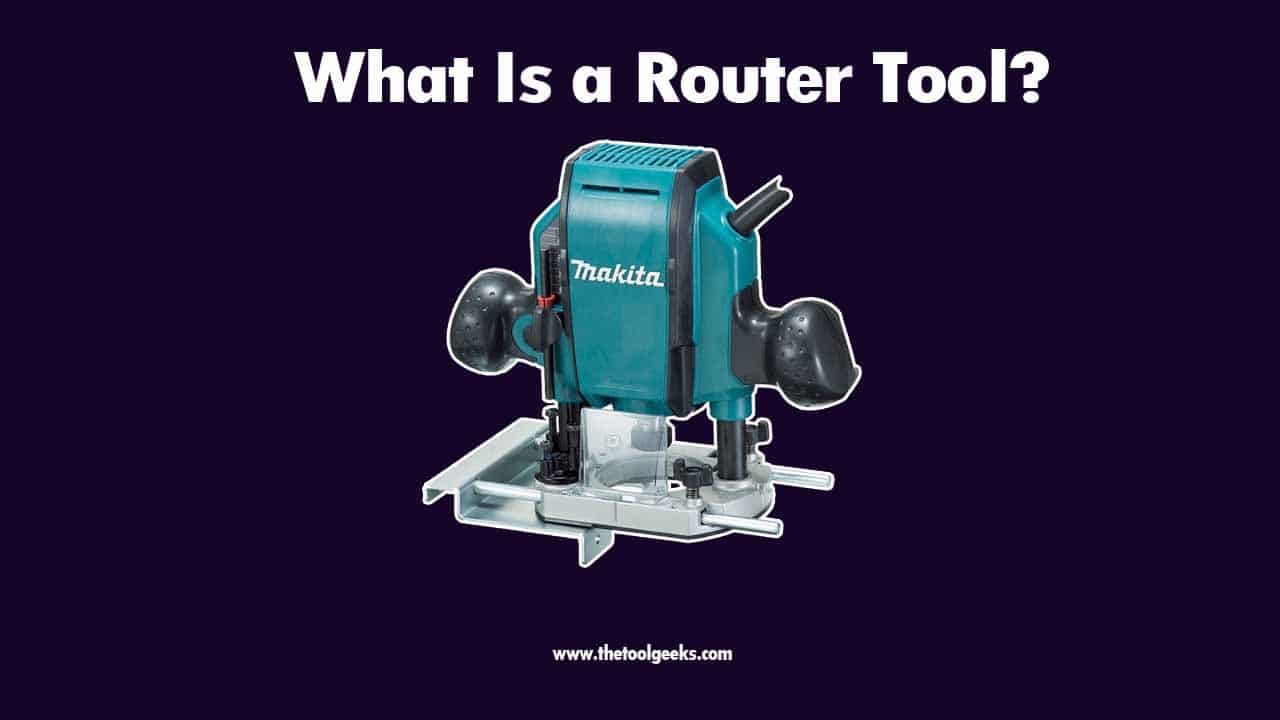Jigsaw vs Router (8 Differences)
TheToolGeeks.com is a participant in the Amazon Services LLC Associates Program and other affiliate advertising programs. We may earn from qualifying purchases. (Learn More).
Whether you are setting up your new woodworking shop or you love to try your luck with different DIY woodworking projects, investing in the right woodworking power tools can help ensure the best quality output.
As a woodworker, you need a variety of saws and other tools to cut the wood in different forms and shape it just the way you want. Among all these, the jigsaw and router are often used and have different purposes to serve.
Before you pick one of these for a certain job, it’s important that you understand if the chosen tool is meant for that or not. If you are new to woodworking, let’s find out the differences and similarities between jigsaw vs router.
Jump To Page Contents:
What Is a Jigsaw Tool?
A Jigsaw is a woodworking power tool that comprises an electric motor and reciprocating saw blades. The motor powers the tool and the blades perform the cutting action on wood.

There are different types of jigsaw blades available in the market. In older models, the blades were screwed into a jigsaw to make it work. However, since the introduction of tool-free blade change systems, changing the jigsaw blades has become quick, simple, and tool-free.
The jigsaw blades can be categorized into T-shank and U-shank alternatives. The T-shank jigsaw blades have become more of an industry standard for professional use as they offer a tighter fit and last longer.
When choosing jigsaw blades, it is important to consider their tooth design. The tooth shape, tooth spacing, and the cutting angle play an important part in ensuring quick and clean cuts with the optimal performance overall.
The side set and ground jigsaw tooth can offer fast and clean cuts in both wood and plastic. On the other hand, the wavy set and milled jigsaw tooth should be used to cut most of the metals and plastics as well.
For quick, rougher cuts made in the plastics and wood, you should go with a side set and milled jigsaw tooth. You can use ground and taper ground jigsaw tooth for making fine, clean, and precise cuts in the wood.
Besides, the blades are made with different materials as well such as:
- High-Carbon Steel (HCS): It is flexible and can be used to cut softer materials like wood, plastics, and laminated particleboard.
- High-Speed Steel (HSS): It is stronger and appropriate for cutting different metal types.
- Bi-Metal (BIM) Blade: It’s a combination of HCS and HSS. The blade is both flexible and strong and is appropriate for the most demanding applications that require versatility and flexibility.
- Tungsten Carbide (TC): It is strong enough to cut abrasive metals like reinforced plastics, cement board, fiberglass, tiles, glass, bricks, cast iron, and stainless steel.
Just like miter saws, a few modern jigsaws also provide a bevel function on the slope that allows them to cut at regular angles. This feature also helps with making miter joints.
Related Read — Best Battery-Powered Jigsaws
What Is a Router Tool?
A router is a woodworking power tool or hand tool that is used for routing an area of some hard material such as wood or plastic.

The best routers are helpful in shaping wood edges, creating joints, “routing out” grooves, and creating intricate designs among other things.
Routers are particularly used when working with cabinetry. They can be categorized into two types i.e. primitive routers (hand tools) and electric routers (power tools). Let’s find out what they are and how they are different.
-
Primitive Routers
Primitive Routers are hand tools that feature a base and a sharp blade that helps with chiseling wood. Often, they are referred to as hand planers.
-
Electric Routers
These routers are a more modern woodworking tool that operates with an electric motor for creating a hollow path on your desired hard surface. These routers are more versatile compared to their primitive counterparts.
Jigsaw vs Router?
Though both jigsaw and routers are used to cut the wood, obviously in different ways, they have some notable differences that set them apart.
Let’s find out the differences between a router vs jigsaw and which of these power tools would be best suited for your needs depending on what you want to achieve.
1. Jigsaws Are Meant For Cutting But Routers Aren’t
The primary difference between a jigsaw and a router is that they have a different fundamental purpose to serve.
Jigsaws are meant to saw wood and other materials. They feature long serrated blades to make straight and curved cuts. You can use them for making cross-cuts, angled cuts, rip cuts, and even bevel cuts.
Routers, on the contrary, do not saw wood at all. They are actually designed for rounding the edges off and trimming down wooden pieces.
They can efficiently round off interior/exterior edges and can also create a hollow in the wood. They can do things that can’t be done with a jigsaw.
Related Read — Why Should You Use a Jigsaw to Cut Plexiglass?
2. Electric Or Manual Operation
Jigsaws are electric tools and they can’t be operated manually at all. There are no manually-powered jigsaws but that’s not the case with routers.
Routers give you both the options. Usually, routers are electric as well but you can find manually-powered alternatives too.
3. Blades vs Bits
Another major difference between routers and jigsaws is in the cutting mechanism they use. Routers use circular bits for trimming the wood.
These bits rotate around their axis. The router bits can either be similar to the sanding bits or they can use special blades for cutting. Jigsaws, on the other hand, use long serrated blades that cut by their reciprocating moves.
Related Read — Making Curved Cuts With a Jigsaw
4. Jigsaws Cut More Material Types
Yes, jigsaws can efficiently cut more types of materials than routers that are designed to work on wood only. On the contrary, jigsaws can be effective with metal, plexiglass, carpet, ceramic tile, etc.
In addition, jigsaws are capable of cutting woods with different densities and thicknesses. And, if you use the right blade, they can cut through fiberglass, drywall, and steel as well.
That, certainly, makes the tool quite versatile and even more valuable for your woodwork shop. You can easily change the blades for different types of cutting as well.
5. Jigsaws Have Longer Blades And Can Cut Deep
While you can technically use routers as a saw, which can cut the wood into pieces, they are not intended to serve this purpose.
The router bits have been designed to cut grooves and hollows into the wood. Generally, the bits are very short, not more than a couple of inches, and cannot be used for cutting thick wooden pieces.
On the contrary, jigsaws use longer blades that have been designed to cut wood apart. They are a few inches long and can saw thick wooden pieces apart. So, if you have to cut the wood deeper, a jigsaw should be your go-to tool.
Related Read — The Difference Between a Bandsaw and Jigsaw?
6. Routers Are For Making Sharp-Angled Turns
Jigsaw blades are capable of making curves into the wood but they aren’t very sharp, generally. Some jigsaws come with a rotating knob that helps in moving the blade and allows you to make tighter curves but if you try making too tight a curve with your jigsaw, you might end up breaking its blade.
Routers, on the other hand, use a rotating bit rather than a flat jigsaw-like blade. So, they are capable of cutting in virtually any direction.
You can use a router for cutting straight, and then immediately move it to 90 degrees right or left to make a cut at a right-angle.
You just can’t achieve that using a jigsaw. Regardless of how sharp-angled cuts you are making, you won’t end up breaking your router bit.
7. Easy Blade Replacement Compared To Bits
When you end up breaking a jigsaw blade, it has to be replaced. Besides, you might need a different blade for different stages of your woodworking project. So, you need quick and easy blade replacement to save time.
Most of the jigsaws only require you to turn the Allen screw for changing their blade. With proper tools at hand, turning the screw shouldn’t really be a big deal and can be done quickly and easily. Besides, there is nothing like having to adjust the depth of the bit.
When it comes to routers, however, the bit first needs to be locked so that it may not rotate. After that, you have to loosen the bit collet using a wrench.
Next, remove the bit, replace it with the desired bit, and tighten the collet using the wrench. Finally, remove the lock to be able to start using it again. Once you have replaced the bit, you must restore its depth to make sure everything is exactly the way it was before.
Some woodworkers prefer using fast chucks for replacing their router bits. With these, you just have to turn the Allen screw and the bit will loosen up. Though it is time-saving, it doesn’t adjust the depth and you have to do it yourself.
8. Routers Have Safety Issues
Safety is one of the major concerns when you are working with your woodworking tools. If you think that routers are safer because they don’t have a blade like jigsaws, you’re mistaken.
Actually, routers are more dangerous compared to jigsaws. The speed at which the router bits move is way more than that of the jigsaw blades and that certainly makes them a bit of a safety concern for the woodworkers.
Besides, jigsaws are generally easier to handle which makes them a safer choice. They are also less likely to slip and cause injuries.
On the contrary, there is a greater chance of sustaining such injuries when you are working with routers. In addition, routers can sometimes crack the wood they are working on and it may shoot out at the user causing injuries. That’s rarely the case with the jigsaws.
Frequently Asked Questions (FAQ’s) About Jigsaws and Routers
1.Can You Use a Router as a Jigsaw?
Answer: A router can be used for cutting wood, but it is typically not used in exactly the same manner as a jigsaw.
Jigsaws are usually used freehand whereas routers are always used with a pattern or jig, except when you are doing some edge work in which a guide bearing is used with the router bit. Alternately, a fence could be used as well.
Generally, jigging a router is much more complex. Besides, it will cut a wider swath creating way more wood chips and sawdust. A router also cuts much slower when using it on thicker materials and you have to learn and practice a lot for getting proper cut direction.
2. Can You Cut a Straight Line With a Router?
Answer: You cut use a router to cut a straight line unless it is guided against a fence. Sometimes, you can simply fasten a board to your workpiece with a clamp and the router can move along the edges of the board.
3. Can You Use a Router Freehand?
Answer: Generally, routers produce the best results when attached to a router table. You could still use a router freehand but it has limited use. For some, however, it’s all they need.
Wrap-up
These two woodworking tools have their own strengths and weaknesses and they both make an essential power tool for your woodworking workshop.
When it comes to their usage, both the tools are pretty different from each other. You should use a router if you simply want to router your workpiece but if you intend to make different cuts then a jigsaw should be your preferred choice.
We hope all the information provided above answers most of your queries and concerns about jigsaw vs router. It will certainly help you pick the right tool for your woodworking needs.
Amazon and the Amazon logo are trademarks of Amazon.com, Inc, or its affiliates.

